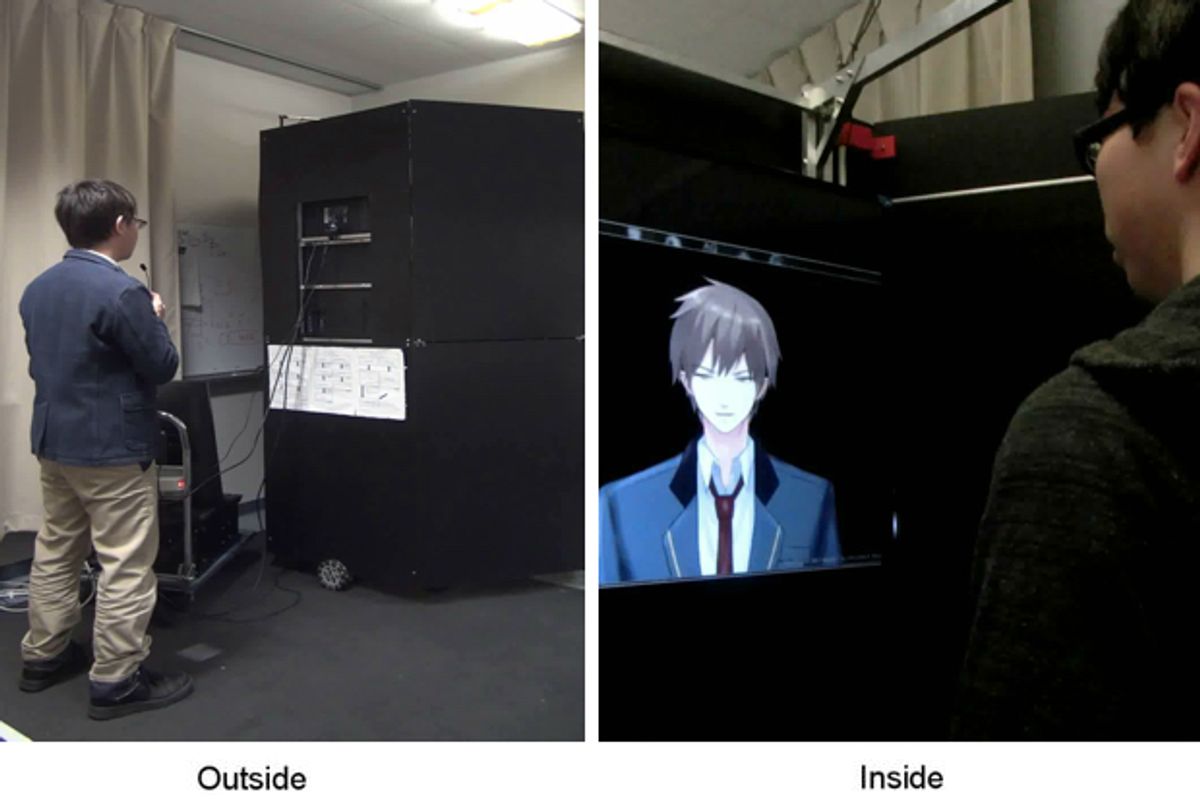While I personally never ever not once have I ever suffered from any sort of social anxiety, I recognize that it’s a thing that people can struggle with. And especially for people with autism spectrum disorder (ASD), social situations can be very challenging. Part of the difficulty lies in insufficient or excessive agency cues (nonverbal social signals that include gaze, facial expression, and personal distance), and while there’s been a substantial amount of research towards helping people with ASD improve their cognitive skills, researchers in Japan are trying a different approach through a ‘comfortable information environment” called the Mobile Personal Space.
The Mobile Personal Space (MPS) is a physical shell that completely encloses an individual with social anxiety. Once you’re in there, you can’t see anybody, and nobody can see you. If you want to move around, just walk towards one of the walls, and a tracking camera will cause the entire shell to move with you on a set of omni wheels. Interaction with the rest of the world is mediated by cameras and LCD screens—in the final implementation of the MPS, there will be a screen on each side (that is, inside and outside) of each wall, although for this prototype they could only afford to put a single screen on the inside of one wall with an accompanying camera feeding in a view of what’s outside.\

These screens and cameras are about more than just physical separation. Using facial recognition, software translates the camera feed of a real person into an animated avatar, mapping facial expressions and movements onto the character. This appearance modulation is designed to reduce social anxiety in what would otherwise be a face-to-face situation.
The researchers were able to conduct a “preliminary psychological experiment” with their prototype MPS system, but the results were “not good,” author Kazunori Terada told us at an IROS poster session. Feelings of being confined, fear of the other person, and sadness when a conversation wasn’t going well all increased significantly, reported test users. However, the number of utterances during an interaction almost doubled, suggesting that something about the MPS actually might improve communications in some way.
The researchers would like to continue working on their prototype, but they readily acknowledge all of the things that you’re probably thinking: Among them, that this system can’t go up stairs, fit through doors, or really be moved around at all. And using something like this in a realistic social situation would be, uh, weird. For everyone, probably.
“Mobile Personal Space: A Personal Space Robot to Assist People with Social Anxiety,” by Kazunori Terada and Tomohito Hara from Gifu University in Japan, was presented last week at IROS 2017 in Vancouver, Canada.
Evan Ackerman is a senior editor at IEEE Spectrum. Since 2007, he has written over 6,000 articles on robotics and technology. He has a degree in Martian geology and is excellent at playing bagpipes.



